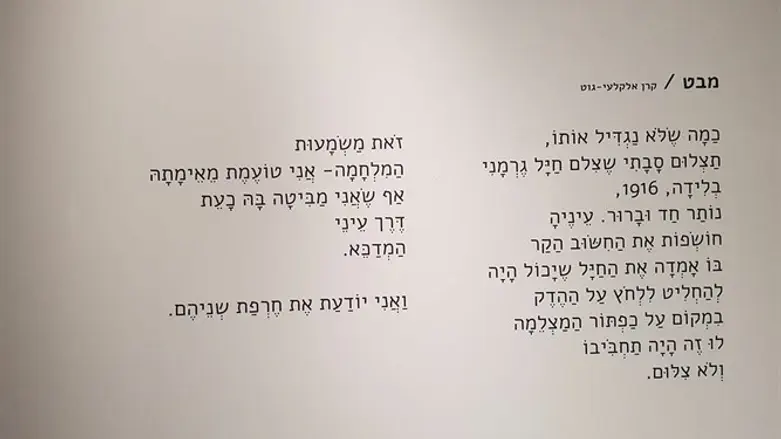
Yad Vashem Holocaust museum in Jerusalem responded quickly following criticism of a poem included in an exhibition called “Flashes of Memory - Photography during the Holocaust.” The poem’s words were seen by some as implicitly comparing the Germans, as a people that oppressed the Jews, to IDF soldiers.
The words of the poem, "Sepia," are as follows:
“No matter how much we enlarge it,
That photograph snapped by a German soldier
Of my grandmother in Lida, 1916,
Remains perfectly clear. Her eyes
Register her cold measure
Of the soldier who could decide
To shoot her instead of her
Picture if that
Was his hobby
Instead of photography.
This is what war
Is like - I taste her fear
Even though I'm seeing her
Now from the eyes
Of the oppressor.
And I know the shame of both."
Following harsh criticism on social media and an article on the matter by the journalist Sivan Rahav-Meir, the poem was removed from the exhibition.
Yad Vashem said in response that “The exhibition ‘Flashes of Memory - Photography during the Holocaust’ is a new temporary exhibit presented in the houses for temporary exhibitions at Yad Vashem. A number of visitors to the exhibition brought to our attention the fact that the poem ‘Sepia’ shown at the exhibit could be interpreted as if it were intended to make a political statement.”
“As this, of course, was not the intention, we decided to remove the poem from the temporary exhibition. We are sorry that the things were understood differently and wish to emphasize that, on principle, Yad Vashem opposes all political use of the memory of the Holocaust. The choice to display the poem at the exhibit dealing with the photograph of the grandmother of the author which was taken in 1916 during World War I stemmed from the fact that it reflects the approach whereby the photographer has influence on the results of the photograph pertaining to the choice of the circumstances of the photograph and the way the object of the photograph is presented,” the museum said.
“She illustrates this in her words, when she views the photograph of her grandmother and notes that she feels the ‘shame’ not only of her grandmother as a victim and object on which the photograph is forced, but also the shame of the documenting photographer, who chose to eternalize the victim and present her in her hour of distress. The intention was to illustrate the function and responsibility of the photographer and present the power of the camera as a manipulative tool of great power and extraordinary ability to influence. The values of the photographer and his ethical conception are reflected in the results of the photograph. This is the focus of the exhibition.”
